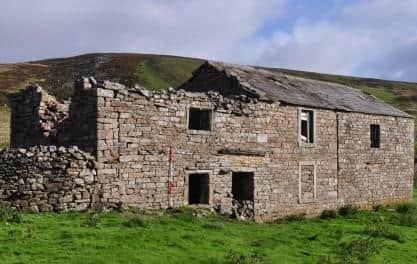Yorkshire Dales farmhouse built in 1700 and abandoned for over 100 years set to be converted back into a home
Martin and Jane Webb want to bring Mount Pleasant at Low Row in Gunnerside back into use for the first time since the early 20th century, when it was abandoned as a dwelling. It has been occasionally used for livestock shelter since then.
The couple plan to retain the building’s character – it still has two 18th-century fireplaces and a Georgian cow-house that was a later addition to the main building. There will be no alterations to the footprint or appearance of the farm, and it will retain the same number of floors. It currently has no glazed windows, so these would be reinstated. The three-bedroom property would have the original boskins – large flagstones that formed the division between cattle stalls – intact and the hearths would be regenerated for use with log burners.
Advertisement
Hide AdAdvertisement
Hide AdIn details sent to the Yorkshire Dales National Park Authority as part of a planning application, the Webbs’ agent sets out the history of Mount Pleasant, which has a remote upland location near Gunnerside village. The two-unit farmhouse dates from around 1700, though the parlour was rebuilt in the late 18th century and a lean-to dairy added. The cow-house is from the early 19th century.


Further information was provided by buildings archaeologist Stephen Haigh, who compiled a heritage report. As the site lies within the Swaledale and Arkengarthdale Barns and Walls Conservation Area, development which involves the reoccupation of uninhabited buildings is encouraged, but must be in keeping with the local character.
Mr Haigh assessed that of the three units that make up the farmstead – which the Webbs intend to run as a smallholding by constructing a new outbuilding – one is roofless and a ruin, while the other two are in occasional agricultural use. There is also a separate ruined barn.
He links the building’s various changes of use and eventual abandonment in the Edwardian period as offering evidence of industrial change in the area, suggesting it was possibly made redundant by the decline of lead mining nearby.
Advertisement
Hide AdAdvertisement
Hide AdHe concludes that more harm is likely to occue from the continued deterioration and disuse of the farmstead than if it is converted back into a domestic complex.
The application is currently under consideration.
